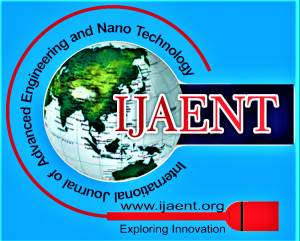![]()
Co-Doping TiO2 Nanoparticles with Phosphorus and Nitrogen- A way to Enhance the Visible Light Driven Charge Separation
Md. Hussain Basha1, N.O. Gopal2
1Md. Hussain Basha, Department of Physics, Vikrama Simhapuri University P.G. Centre, Kavali (Andhra Pradesh), India.
2N.O. Gopal* , Department of Physics, Vikrama Simhapuri University P.G. Centre, Kavali (Andhra Pradesh), India.
Manuscript received on August 10, 2016. | Revised Manuscript received on August 18, 2016. | Manuscript published on August 30, 2016. | PP: 1-5 | Volume-3 Issue-5, August 2016. | Retrieval Number: E0377083516
Open Access | Ethics and Policies | Cite
© The Authors. Published By: Blue Eyes Intelligence Engineering and Sciences Publication (BEIESP). This is an open access article under the CC BY-NC-ND license (http://creativecommons.org/licenses/by-nc-nd/4.0/)
Abstract: Codoping TiO2 with nonmetals is one of the strategies that is used to make these materials sensitive to visible light. In this work, we obtained phosphorus and nitrogen codoped TiO2 nanoparticles by sol-gel method using H3PO4 , NH4OH and Ti (IV) isopropoxide as precursors. As prepared sample were calcined at different temperatures, and the obtained samples were characterized by using different techniques. XRD analysis reveals the retarded phase transition by increased thermal stability and decreased particle size due to codoping. UV-Vis absorption spectra of the co-doped samples show redshift in their absorption edge due to doping of nitrogen and phosphorus. From XPS measurements, it is clear that nitrogen enters into interstitial sites of titania and phosphorus exists in a pentavalent oxidation state by replacing part of lattice Ti4+ by the formation of Ti-O-P bonds. Low temperature (77K) EPR studies with in situ visible high irradiation (>400nm) on the samples heated at different temperatures exhibit signals due to N˙, NO and the radicals formed due to photogenerated holes trapped at different sites in these samples. Effect of heating temperature on these EPR signals has been studied in detail. EPR data reveals the enhanced charge separation as evidenced by the increased hole signal intensity and this enhanced charge separation plays important role in the photocatalytic activity of these samples.
Keywords: Codoping TiO2, XRD, UV-Vis, N˙, NO, (77K) EPR, Ti-O-P bonds, H3PO4 , NH4OH and Ti (IV), redshift.
